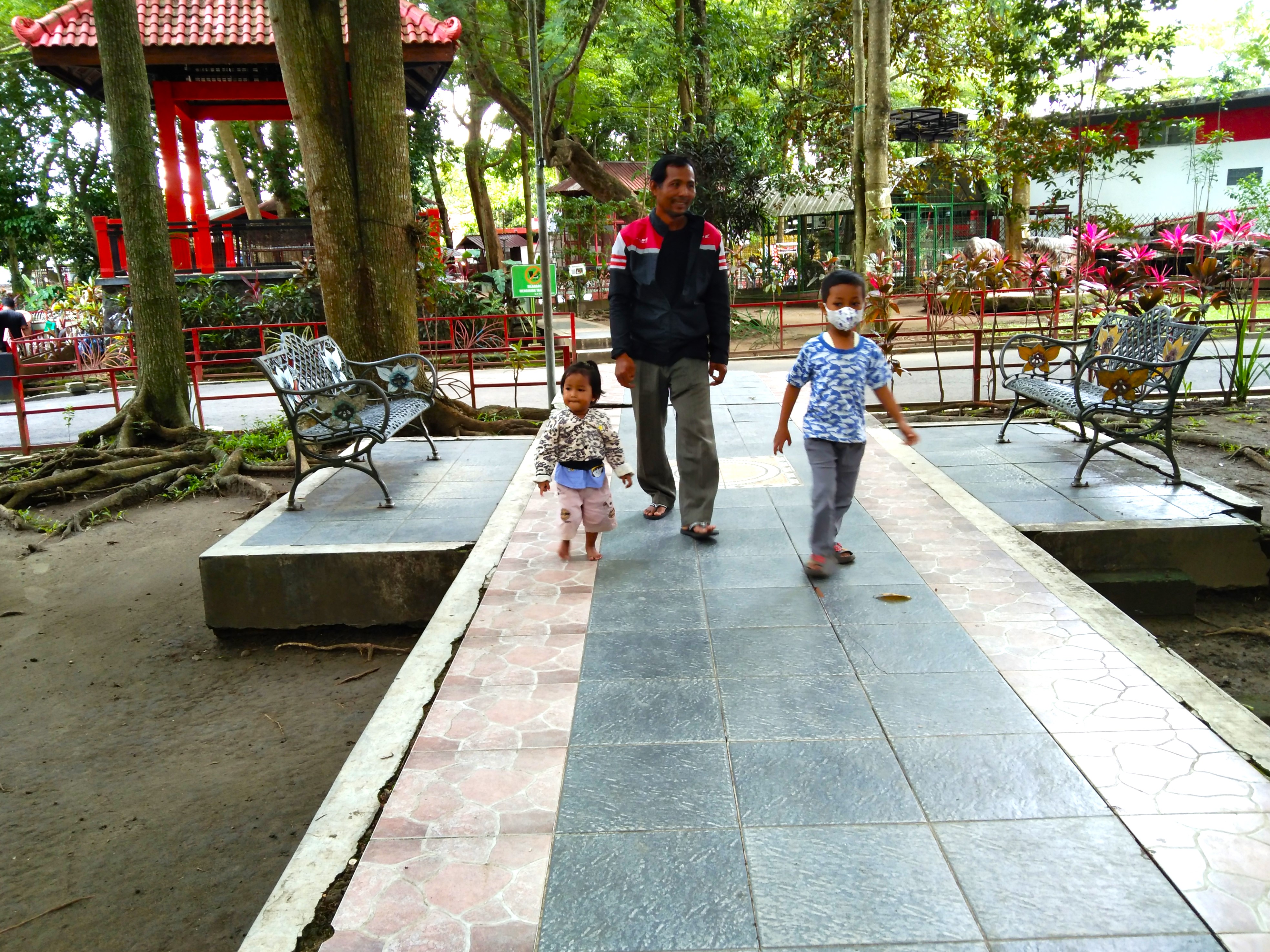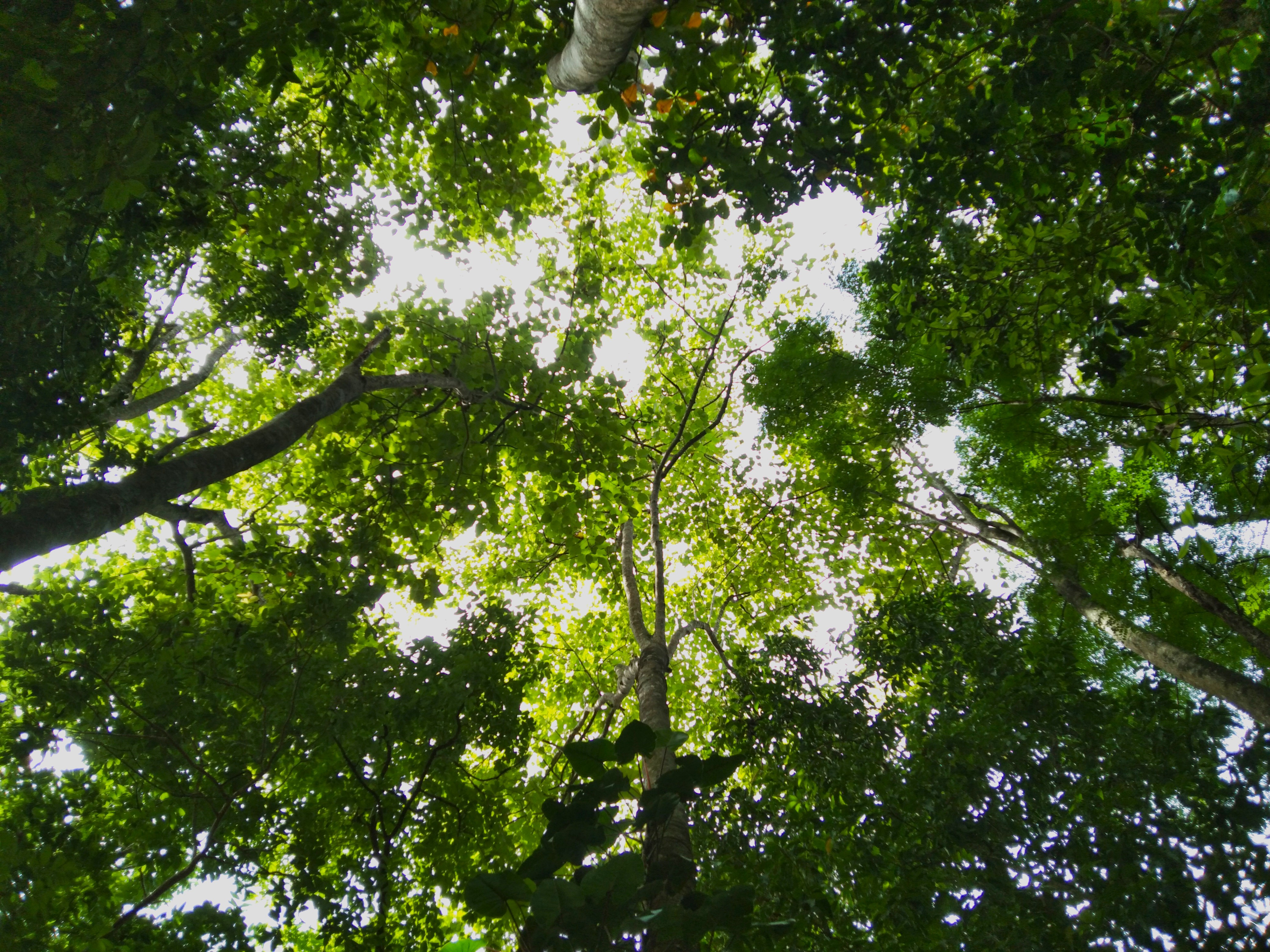
Tracing the History and Natural Beauty of Kebon Rojo People's Park, Blitar
Have you ever imagined a park that not only presents natural beauty, but also holds traces of a long history? In the heart of Blitar City, East Java, there is a green gem hidden called Taman Rakyat Kebon Rojo. This park is not just an ordinary recreation area, but a silent witness to the journey of time, holding stories about the past, biodiversity, and valuable education.
Sabato Kaliwuan invites travelers to walk along the path in Kebon Rojo Park, as if taking them back to the past. It is said that this park has existed since 1890, established by the Dutch colonial government as a superior plant laboratory location. Imagine, this is where Dutch botanists researched and developed various types of plants, creating superior varieties that are beneficial to the community.
This long history is engraved in every corner of the park. Old colonial-style buildings still stand strong, bearing witness to the glory of the past. Towering giant trees, some of which are hundreds of years old, seem to whisper about the stories they have witnessed.
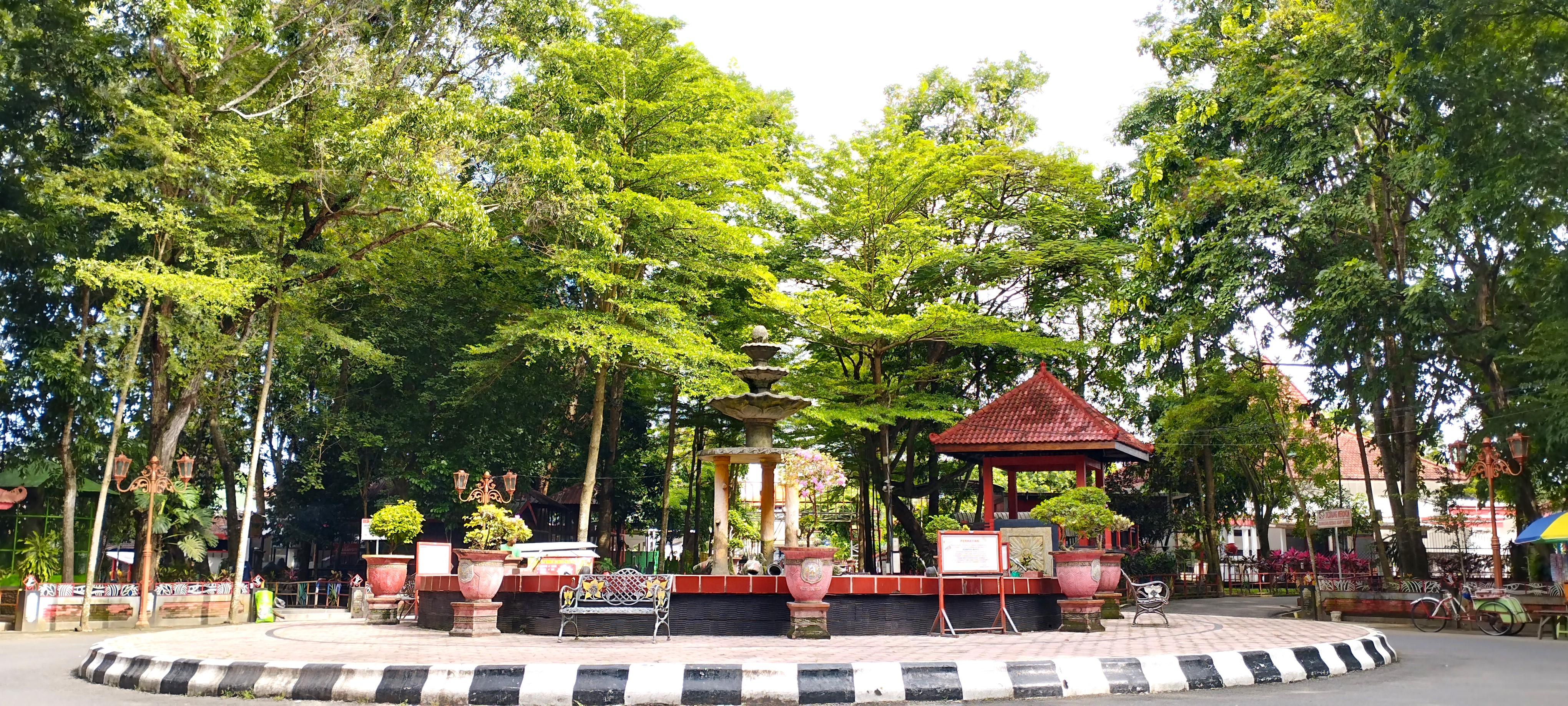
More Than Just a Park, an Ecological and Botanical Educational Paradise
Kebon Rojo Park is not just a place to relax and enjoy the beauty of nature. Here, travelers can learn a lot about ecology and botany. Various types of rare and endemic plants thrive, creating a rich and diverse ecosystem.
Entering Kebonrojo People's Park, the fresh air and calm atmosphere are immediately felt. When the sun's rays accompany the morning, the sounds of birds and some animals kept there are heard responding to each other. Welcome to the small forest of Blitar!, this is the right expression to describe the situation of Kebonrojo in the morning. The park, which opens to visitors at 07.00 WIB, is able to bring the imagination of every visitor as if entering a natural forest.
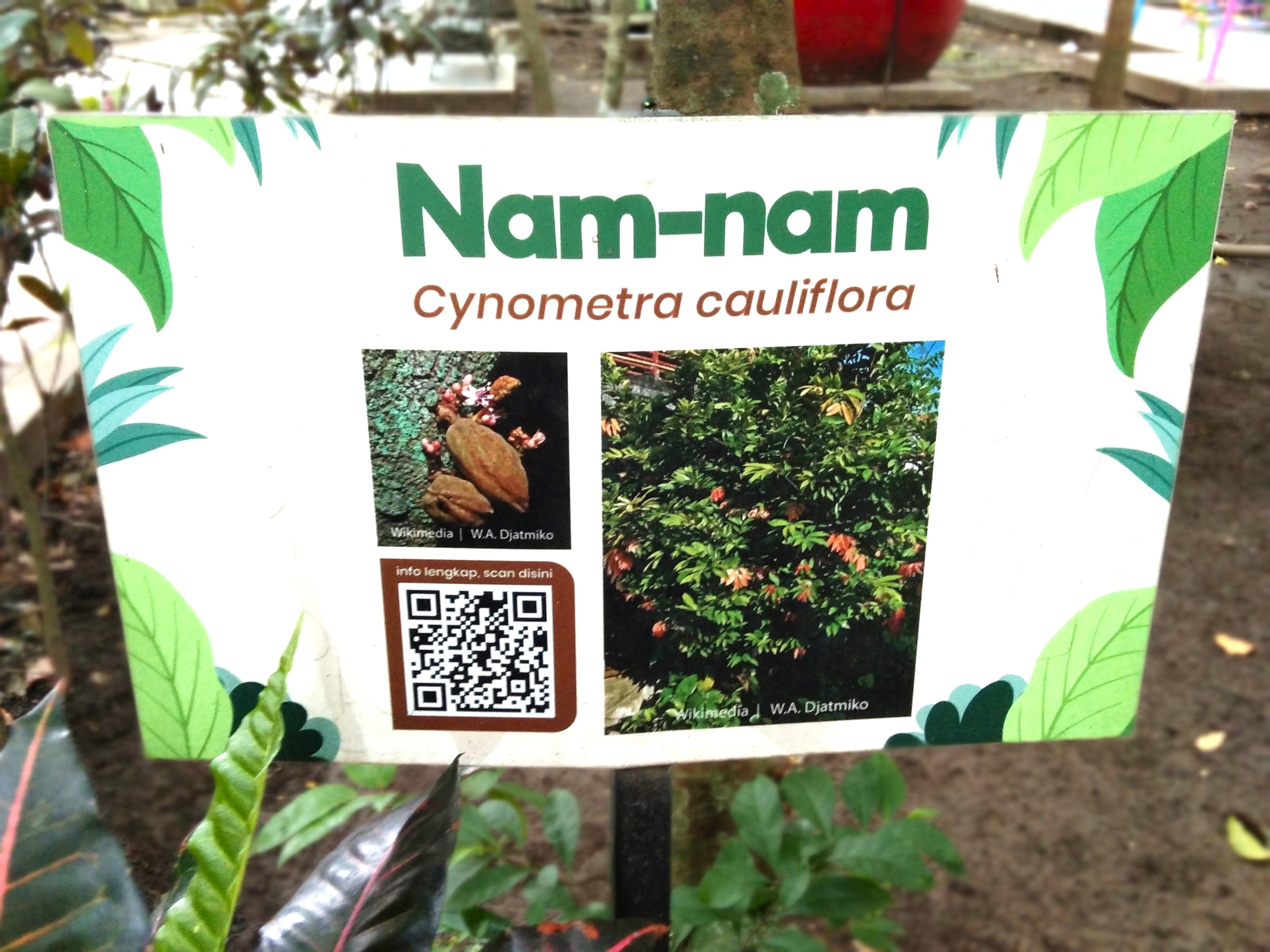
Big trees towering high, birds chirping and monkeys calling, pigeons flying to greet visitors and the sound of the fountain right in the middle of the park. The Blitar City Government as the manager of this location, complements the beauty of the park by keeping various types of animals. Such as the monkey species whose cage is located on the north side of the west side of the park, whose cage is next to deer, iguanas, porcupines, peacocks and ostriches. Then on the south side of the west, the bird cage is built very wide and high for various types of protected birds. This is where the mini zoo concept was created and visitors can interact by feeding the animals from outside the cage which is designed quite safely.
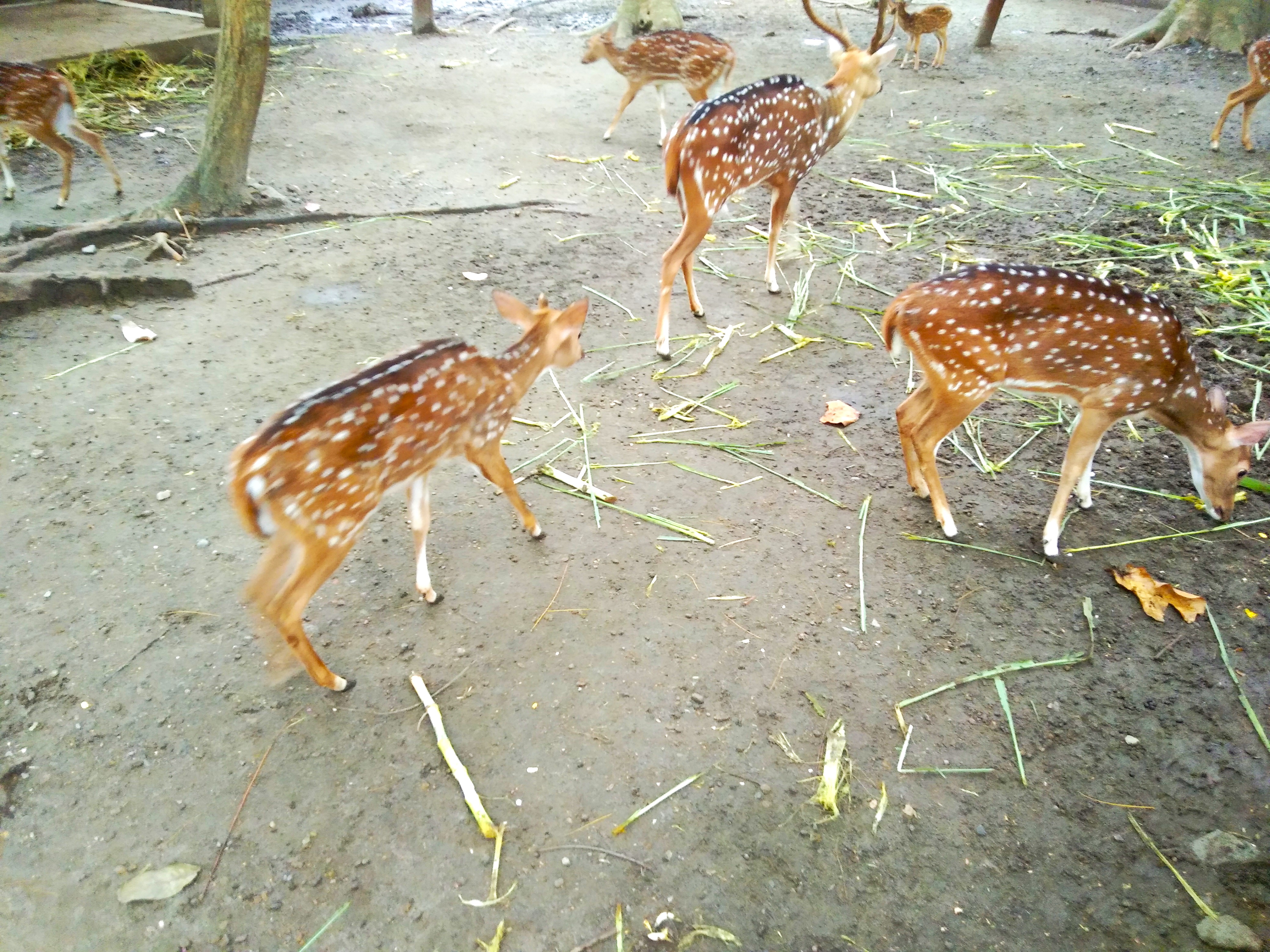
In addition to the animal collection, this park also collects various types of plants that travelers can learn the names of. Several visitors admitted to being fascinated by the neatly arranged collection of traditional medicinal plants. Each plant has a label explaining its name, benefits, and how to process it. This is a rare opportunity to learn about local wisdom in utilizing natural resources.
In addition, the park is also equipped with various educational facilities, such as information boards about types of plants, animals, and ecosystems. There is also a special area for children, where they can learn while playing about the importance of protecting the environment.
At One with Nature, Feeling Peaceful
Amidst the hustle and bustle of the city, Taman Kebon Rojo offers an oasis of peace. The sound of trickling water from the pond, the melodious chirping of birds, and the gentle breeze create a calming atmosphere.
Travelers can sit under the shade of the banyan tree, feeling the peace that is hard to find anywhere else. Fresh air and the scent of wet soil bring us to inner peace. This is the perfect place to relieve fatigue and refresh the mind.
Why is Kebon Rojo People's Park Worth Visiting?
• Unique Educational Tourism Destination: This park offers a different learning experience, combining history, ecology and botany in one place.
• Rich Biodiversity: Various types of rare and endemic plants thrive, creating an interesting ecosystem to study.
• A peaceful and calming atmosphere: This park is the perfect place to relax, unwind and be one with nature.
• Easy and Affordable Access: This park is located in the center of Blitar city and can be easily accessed by various types of vehicles.

Tips for Visitors:
• The best time to visit the park is in the morning or evening, when the air is still cool.
• Wear comfortable clothes and shoes, as you will be doing a lot of walking.
• Don't forget to bring a camera to capture beautiful moments in this park.
• Bring food and drink supplies, or you can find food and drink vendors in the area outside the park.
• Do not litter and always maintain cleanliness.
Kebon Rojo People's Park is a must-visit tourist destination for those of you who want to experience something different. Here, you will not only be treated to the beauty of nature, but also be invited to learn about history and biodiversity.
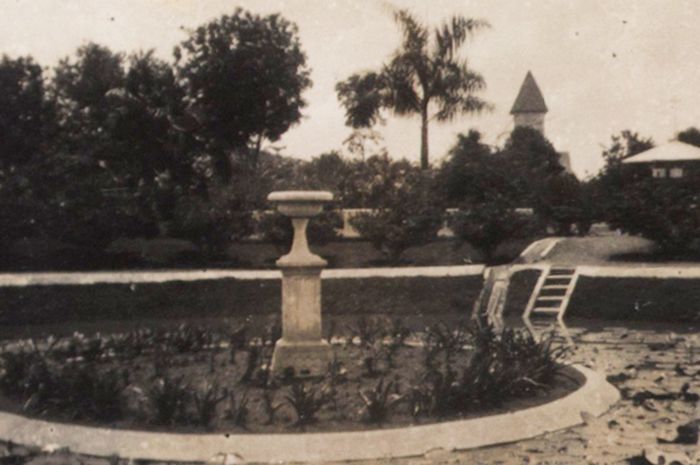
Kebon Rojo, Green Traces from the Dutch Era: Your History Colors the Historical Traces of the Land of Blitar
It is estimated that in 1890, a green park with a long history was built in the heart of Blitar. This park is intended for the public, known as Bon Rojo, which apparently already existed during the Dutch East Indies. The description of Bon Rojo is told by Jeffry Dwi Kurniawan in his book entitled "Bon Rojo, 2022. In the book, it is said that the green park is located in the Bendogerit area, which at that time was the center of the hustle and bustle of Blitar City. Its presence is in a strategic location which was later used as a green open space full of meaning for the community. Not just a place to rest, but an important part of city planning.
In the northern part of Bon Rojo, stands the majestic Burgemeester official residence which also functions as the office of the famous Plantation Controller named the Plantation Controleer during the Dutch East Indies era. Initially, Bon Rojo was intentionally designed to be part of the official residence complex, in order to create a harmonious atmosphere between the building and nature. At that time, Bon Rojo was not just a picnic spot for the community, but a symbol of the revival and progress of Blitar City during the Dutch East Indies era.
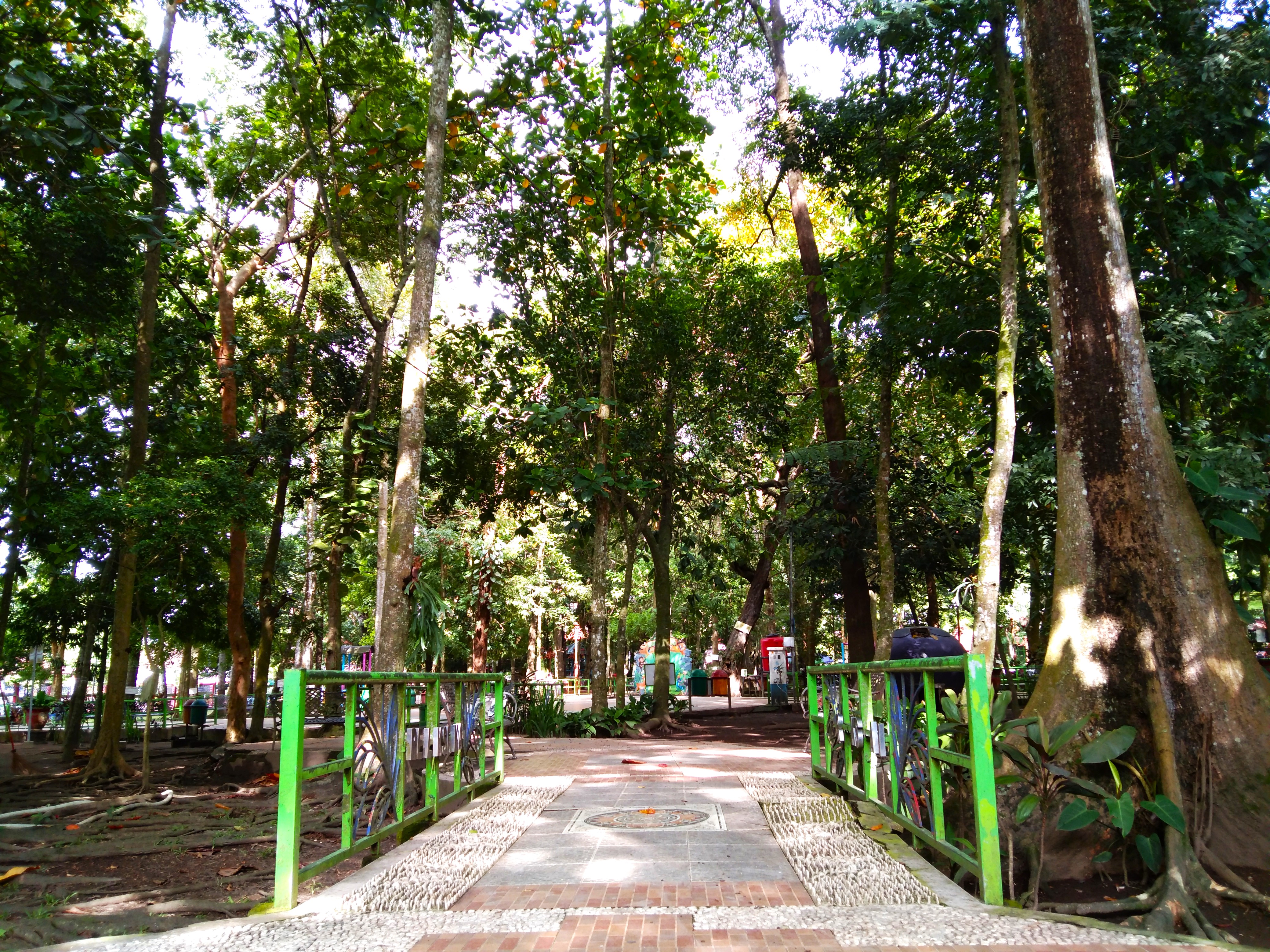
Being a green park located in the heart of Blitar City, it can be clearly seen that there are several places that are the boundaries of Bon Rojo. The Church of Saint Joseph, is a Parish Church adjacent to a school that used to be called HIS Katolik Blitar but has now changed its name to SMK Diponegoro Blitar. Both buildings still exist today, and their location has not changed, namely to the east-facing Bon Rojo. And, to the south there is the OSVIA Building (Opleiding School Voor Inlandsche Ambtenaren) which is the Native Education School for Civil Servants. There are many pieces of memories while in Bon Rojo. The Urug-urug River flows millions of stories as well as adding to the beauty of the surrounding nature as a guard for the western boundary. But now water flows although not like before.
Bon Rojo and its existence are not only known as a beautiful green park, but are better known for their role in maintaining the clarity of the air and environment for the sustainability of the nature of the city of Blitar. At that time, a statement emerged that the only cities that could match the beauty and sustainability of the Blitar stadstuin (city park) were Malang, Bogor, and Medan. Blitar is a clean city and indeed deserves to win the clean city competition at that time. So during the Dutch East Indies government, Bon Rojo was one example of success in terms of aesthetic green open space and at the same time contributed to the quality of life of the community.
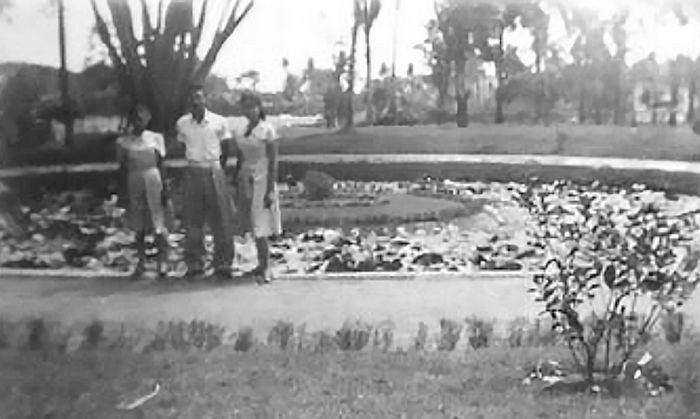
Actually, in the 1960s, this park was famous with the name Kebon Rakjat-Bon Rojo. From that name, several versions of the name and interpretation emerged. Some people interpret the name Bon Rojo as a garden owned by a King. There are also some people who interpret that the name Bon Rojo is from the word Kebun Raya. However, there is a change in the alphabet in Javanese, namely the letter 'J' changes to 'Y' so that it becomes Kebon Raya. And, there are also people who consciously call the park Kebun Praja which means City Park.
Inside the Bon Rojo park, a statue of Ganesha and the Kinewu Inscription were found. The existence of this statue contributed to the name of this park, Kebon Retjo. In Javanese, 'Retjo' means statue. Kebon Retjo is interpreted as a garden that has 'Retjo' or Statue. In the 1960s, the Ganesha statue was moved to the Regency Pendopo and is now stored in the Penataran Museum for better care. The statue that is now in the Bon Rojo park is not the original statue.
Nothing remains the same, as time goes by that Bon Rojo is indeed famous. In addition to the beauty of the park, it also has the beauty of its architecture that characterizes European architecture. What are the characteristics of European architecture? Inside the park there is a 'Koepel', a dome-shaped building located right near the pond in the middle of the park. The Dutch administrative government deliberately built 'Koepel' which functions as a shelter for visitors who want to relax and enjoy the atmosphere and freshness of the park. The 'Koepel' building is what provides real evidence of the influence of European culture in Blitar during the Dutch East Indies Government.
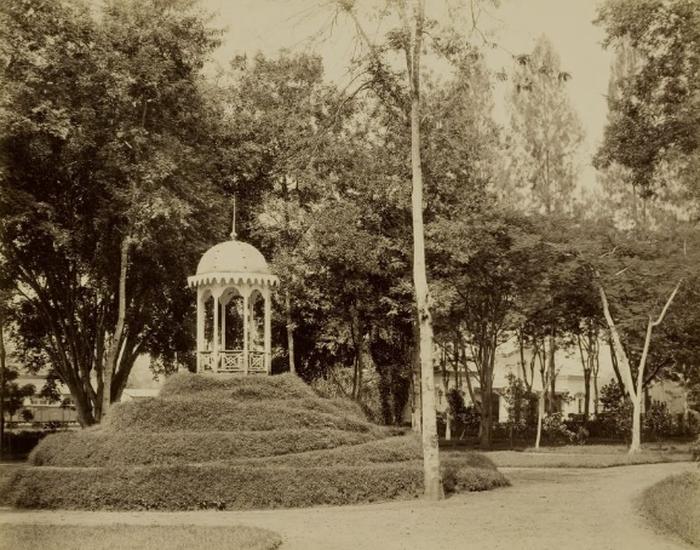
Bon Rojo is not just a picnic center for the people of Blitar. However, the main function of the Bon Rojo park is actually as a superior plant laboratory by the Dutch East Indies Government. And, in practice it is used for the nursery of various variants of the lidung tree including; Perennial plants, various flower variants, and even grass used to improve the quality of plantations or onderneming in Blitar. The interesting thing is, in the Bataviaash Niewblad newspaper published on December 19, 1907, it was reported that Bon Rojo was a miniature of the Bogor Botanical Gardens, which was an agricultural research laboratory for the success of the Dutch East Indies government's economy.
Bon Rojo became a silent witness to the long story of the development and success of the Dutch East Indies government's economy in the plantation sector in Blitar. The maintained gardens were the result of research by agricultural experts of the Dutch East Indies government, which also made Blitar one of the important areas of the Dutch economy through various types of plantations.
Until today, Bon Rojo still has a place in the hearts of the people of Blitar. Their pride in the preservation of the city park, a legacy of the Dutch East Indies Government. Various rare plant variants are still preserved there. As a park, Bon Rojo is a source of refreshing oxygen. A city park that still maintains a connection between the past and the present, as well as being a green vehicle that always receives appreciation from the people of Blitar that cannot be separated from the history of their city.
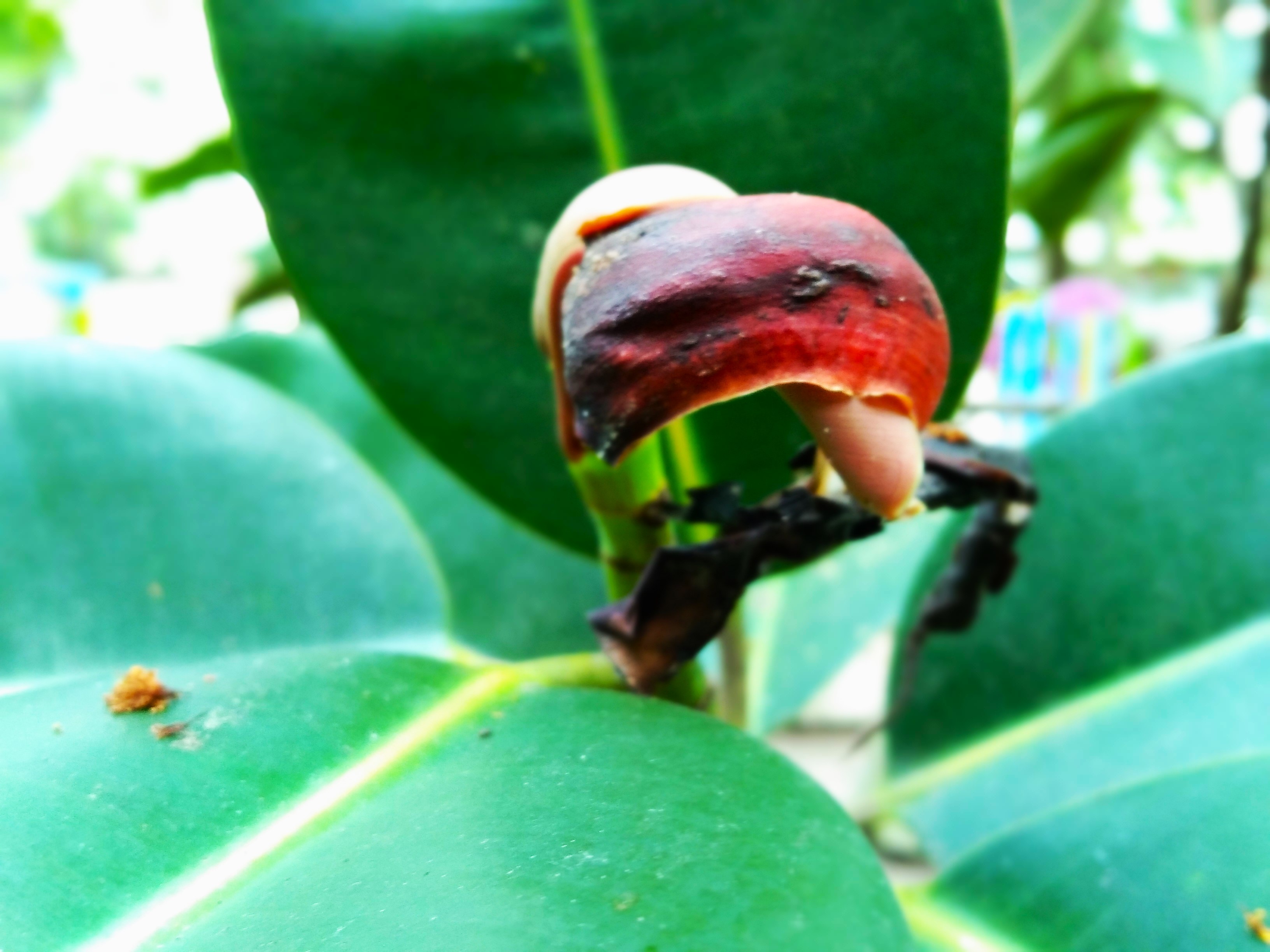
Back to the morning atmosphere. The sun's rays appear reddish orange shining in the east. Now, the day is slowly getting brighter. Last night's rain apparently spread the scent of nature. They slowly evaporate and are inhaled by the sense of smell. The distinctive refreshing aroma as a reminder of the time to do physical activities before leaving to carry out tasks. That's the morning atmosphere that crosses everyone's mind.
Bon Rojo is one of the few places that are common as witnesses of gathering time and expressing the morning that will be the beginning of a day. Shady trees, cool fountains are part of the scenery that refreshes the soul. Not a few people are healthy and refresh their souls by simply visiting the city park in the morning.
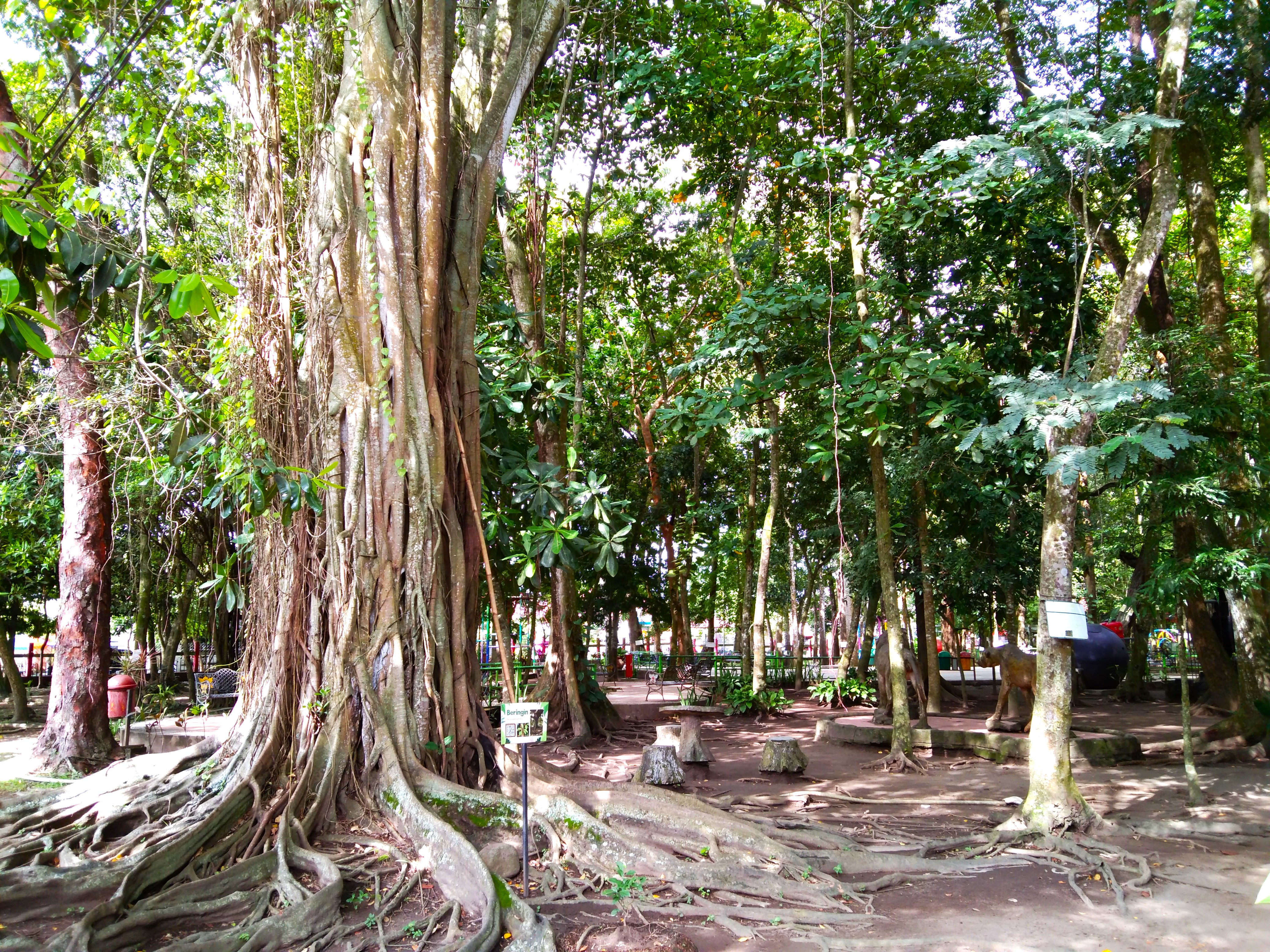
Under the shade, there are iron chairs for anyone who wants to sit while reading a book listening to the silence to admire Bon Rojo. Looking at various types of large trees towering tall. The leaves shade anyone who is under it. As if stopping life outside for a moment to celebrate the togetherness of anyone sitting on the iron chairs under the park trees. A grandfather could only smile, stopping for a moment while looking around remembering decades ago.
Along with all sorts of praise, woven into the historical story contained therein. Bon Rojo is not just an ordinary city park. It is a symbol of how green open spaces can connect generations, provide social and ecological benefits, and become a valuable legacy that will continue to be remembered by the people of Blitar.
